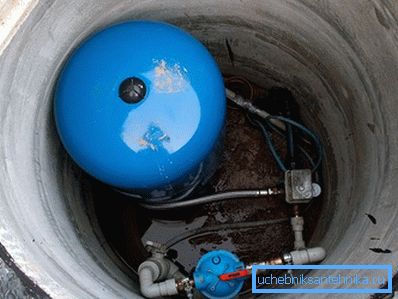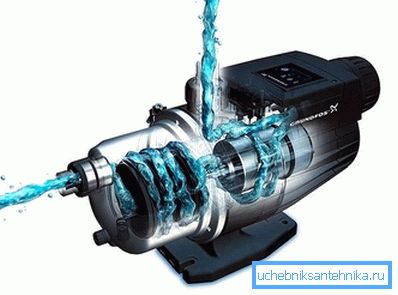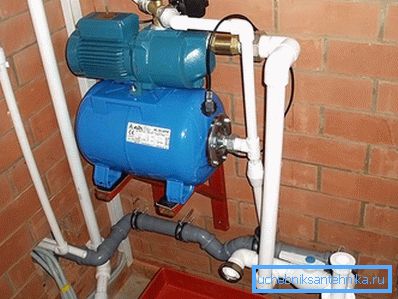How to choose a pumping station
Providing water to a private house or cottage is a matter of paramount importance, on the solution of which conditions depend on the functioning of the household. Being far from centralized water supply networks, resourceful owners use wells and wells as sources of water for drinking, cooking, watering, and household needs. Such water intakes require the installation of additional equipment for pumping water into the house to plumbing fixtures, garden plots, swimming pools or storage tanks. Such units that provide water supply are called pumping stations. By definition, a pumping station is a system for pumping water a sufficient distance from the water intake to consumers. How to choose a pumping station so that it is functional - provided the necessary needs, was reliable and economical? This will be discussed in this article.
Characteristics determining the choice

Such a station includes a pump or pump, pipeline or flexible hose system, as well as pipe fittings with a hydraulic accumulator. When choosing a pumping station, you should pay attention to such characteristics as:
- Power for household models is 0.25 - 1.5 kW.
- Performance related to pump or pump engine power. The optimal performance is Q = 0.6 - 1.0 m? / H for a summer house (without irrigation) and Q = 3.0 - 6.0 m? / H for a private house.
- The height of the fence from the water mirror to the top of the water intake. Its required value is individual for each object and depends on the height of the building and the terrain relief.
- The presence in the design of the pressure gauge and ejector, increasing the height of the water intake pump.
- The volume of reserve capacity is determined by the number of reserve liters required to cover the daily water demand, if the debit of the well does not cover the flow. According to the SNiP, water consumption for 1 person is 200 liters per day, and for irrigation 1 m? lawn, flower beds or beds require 3-6 liters of water per day. As a rule, V = 200–1000 l of reserve capacity is enough to cover all the needs of the average household. The presence in the reserve tank of an additional rubber container or “pear” with a nipple through which it is filled with air allows you to maintain a certain water pressure in the system. Inflating, the rubber tank fills the space of the tank and pushes the water into the system.
More modern models are equipped with a hydroaccumulator and an additional device - a water pressure adjustment relay, complete with the unit. This allows automatic filling of reserve capacity.
Pumps for wells and wells

Particular attention should be paid to the choice of high-quality pump for a private home and to give. Pump types:
- Surface.
- Submersible.
Surface devices are divided into vortex and centrifugal, which are usually equipped with an ejector.
The advantages of surface pumps include low power consumption and small size.
It is used when necessary to ensure the transfer of large volumes of water from small depths - wells, ponds or tanks. The disadvantages of this type include the inability to run the pump dry. To enter the operating mode, it is required to fill the suction pipe or at least the pump body with water, as it is sensitive to air leaks that cause malfunctions. And the main drawback is the small working depth. It can be as low as 5–7 m. Designs of models of pumps equipped with an ejector provide a greater depth of water elevation of 9–10 m.

Submersible pumps are divided into centrifugal and vibration. They allow water to be raised from a depth of 15–20 m. Such devices are free from the drawbacks of a surface type pump. Have a simpler design. Submersible pumps produce less noise during operation.
Submersible pumps are more sensitive to the presence of impurities in the water, especially sand. For pumping polluted water special drainage submersible pumps are used, which are not afraid of impurities.
Models for home or garden

Which model of pump station to choose?
- For deep water intakes, models consisting of a submersible or surface pump with a built-in ejector paired with a hydraulic accumulator are suitable.
- For deep wells with accommodation in the house, it is better to choose a complete set with a low-noise pump with a remote ejector and a hydroaccumulator.
- For shallow wells, wells or reservoirs, a simplified low-cost model with a surface pump without an ejector and without a hydroaccumulator is suitable.

So, if you decide to purchase and install a pumping station, be sure to consider the recommendations outlined in the article. Maybe you have questions on the subject? Ask them to an expert working on our website, or write a comment on the article.
Video
More information about the varieties of pumping stations, you can find out by watching the video: